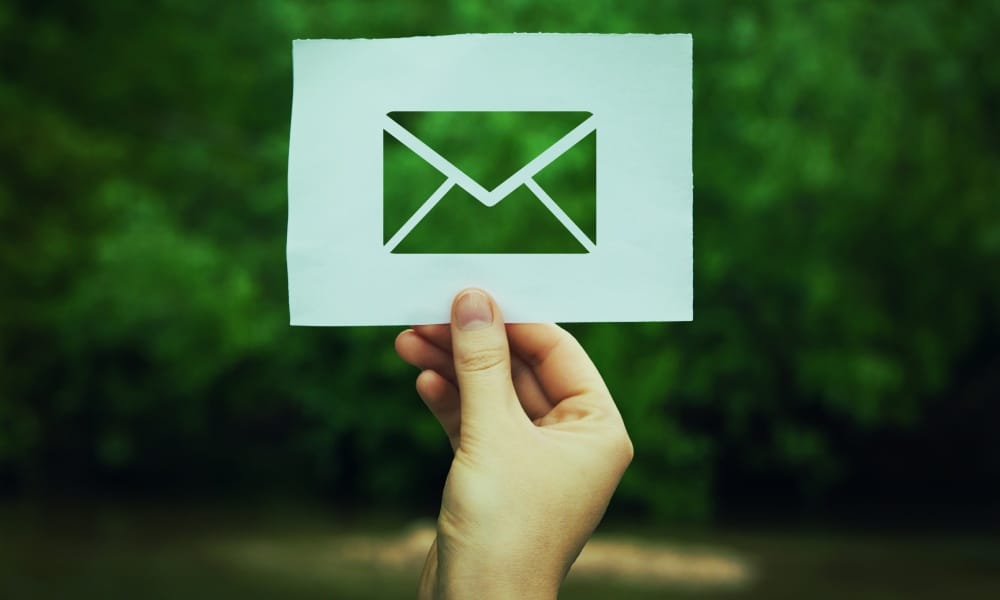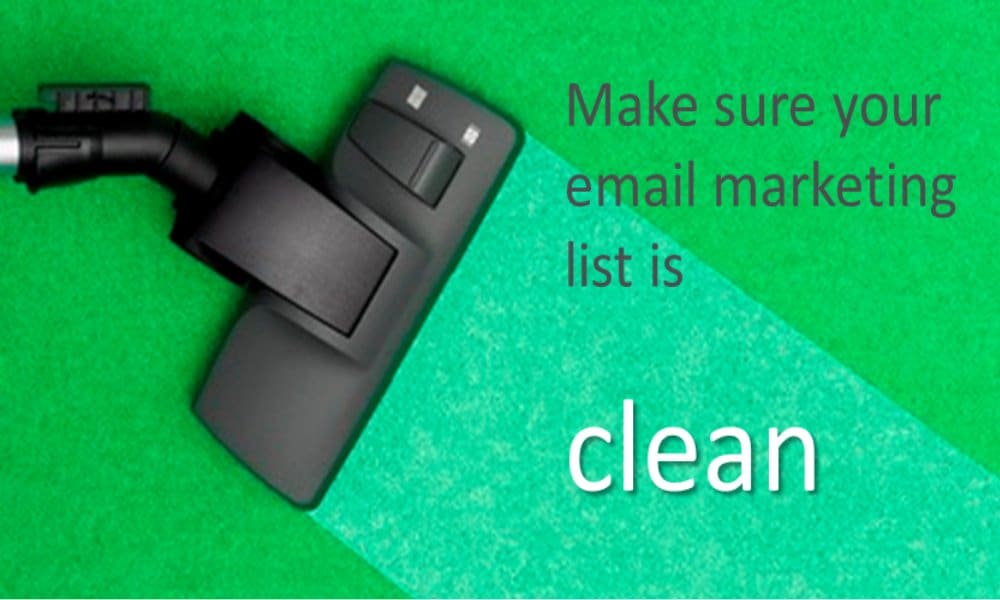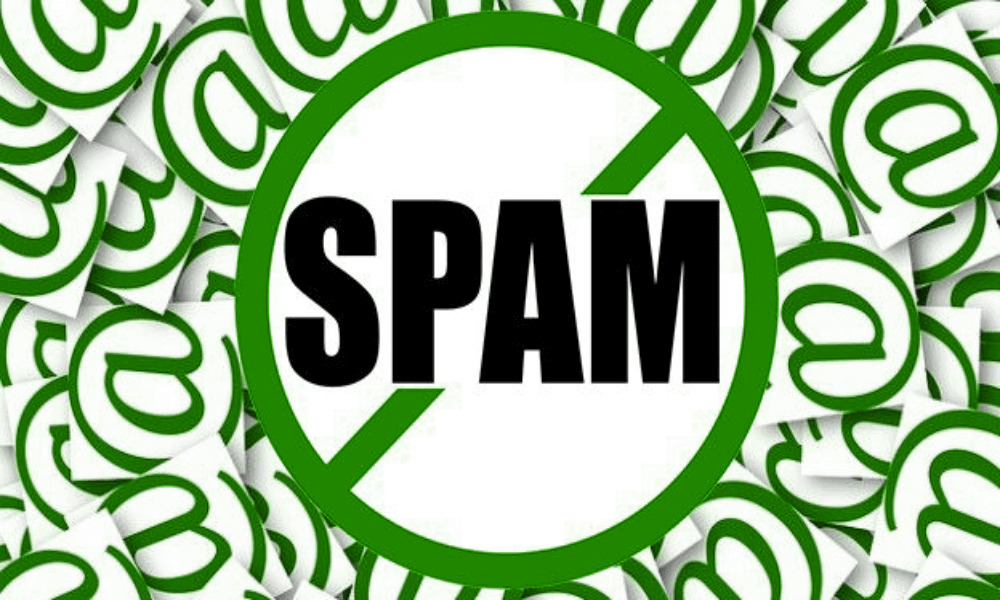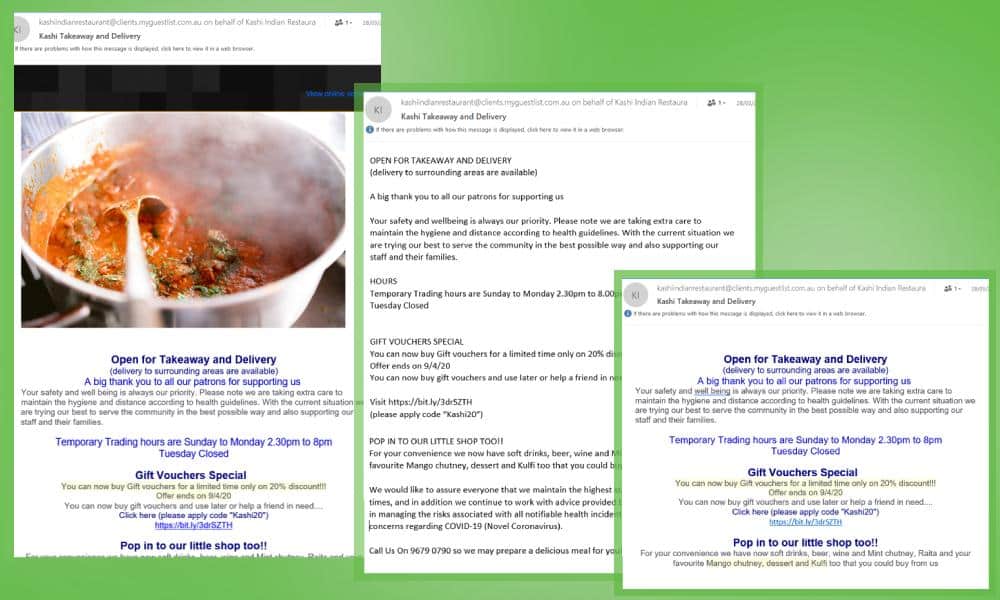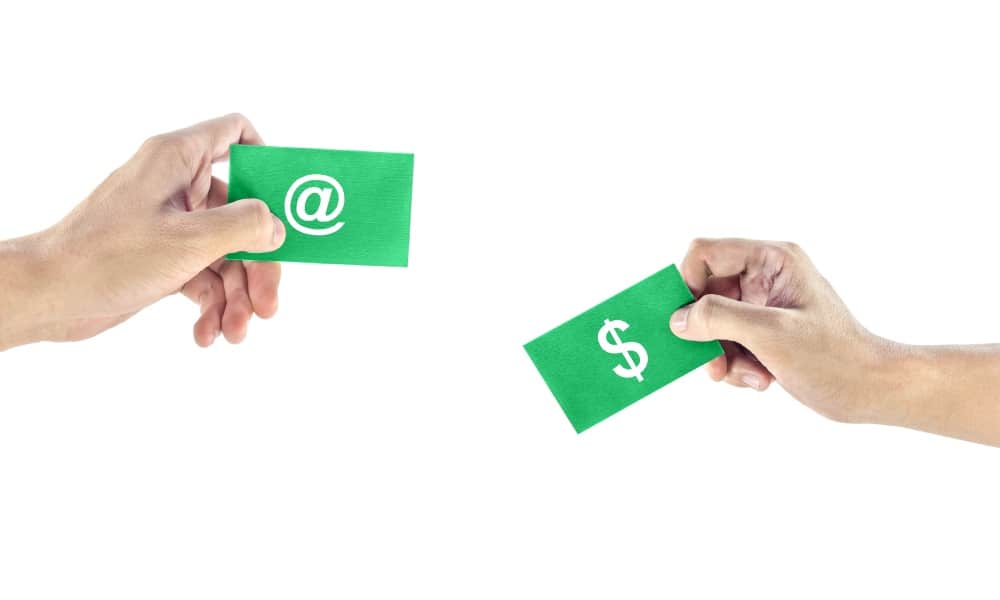I’m a passionate believer in email marketing, which starts with an effective email newsletter.
Is your newsletter effective? Let’s look at three questions:
- Why are you sending this newsletter anyway?
- Do the content and format of your newsletter achieve that goal?
- How do you measure success?
What’s the goals of an effective email newsletter?
Unless you’re an e-commerce business, your regular email newsletter isn’t usually about making an immediate sale.
Much more likely is that you want to
- Remind people you exist.
- Prove to them that you’re a valuable and useful person to stay in touch with.
This way, you gradually build respect and a relationship.
To achieve these goals, an effective email newsletter must provide value for readers. That value could be a practical benefit, or it could just be entertainment. But there has to be something helpful, educational or entertaining.
The best email newsletters deliver value in all three ways.
Of course you can still sell or promote services, but don’t overdo it. Keep selling to 10% or 20% of the content. You might have one (short!) selling paragraph in every email, or you might have only one in every 6 or 7 emails with any kind of pitch in it. Either is fine.
Content ideas for effective email newsletters
Here are some ideas for how to provide valuable and/or entertaining content.
- Tell a story about something you did which led to a great result for someone. Stories provide human interest, plus these ones show you in a good light. Especially helpful if readers have a similar experience to your story.
- Report back on an event you went to or a research report. Add your opinion. Clinch this by having an actionable ‘key takeaway’ as well.
- How about a practical checklist for your area of expertise? Questions to ask a potential employee. Insurance options any business might need. What you should have in place for e-security.
- Ask questions. Questions show you are interested. (Reply immediately to any answers you get. Consider sharing the best answers in your next newsletter.)
- Review a business book or podcast. People love to learn but don’t have time. Help them.
- You might also feel comfortable with a personal update. It depends on your business and your relationship with your contacts, but this can be a great way to deepen a relationship.
- Explore tangential content. Write about something which is relevant to your audience, but not at all related to you and your business. For example, an architect might write about award-winning builders, or how to choose a builder or things to look out for when managing your own building project.
- Not all content has to be your original content. You can share or point to other people’s content – as long as it’s relevant and valuable for your audience. (This is a good way to build relationships with non-competing but related businesses as well as your audience, by the way!)
And here’s an example of what not to do! You could argue this is entertaining, but it’s also frustrating!
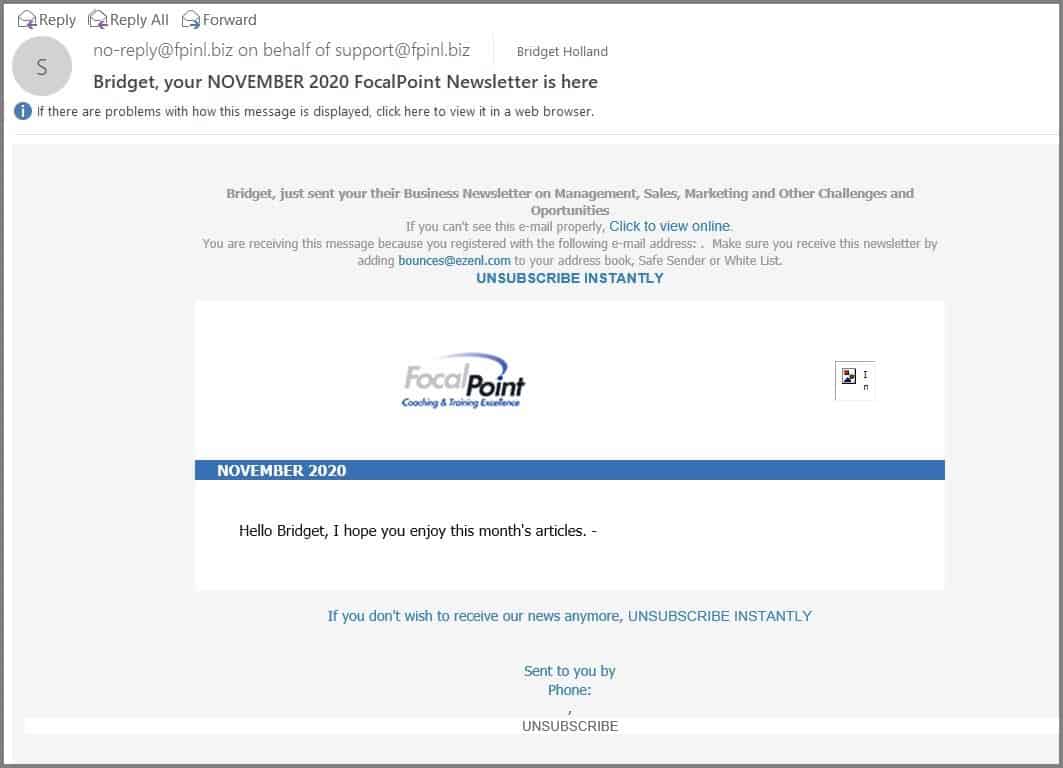
Effective email newsletter formats
There are a few things to consider in terms of email format.
HTML versus Rich Text
Do you want a ‘professionally designed’ look, or do you want a more casual feel as if you just sent from within your standard email program? There are pros and cons of both formats. It’s really about your branding and positioning. If you’re not sure, you can always run a test.
The most important parts of your email
It’s a good idea to concentrate on the parts of your email which get the most attention from readers.
The subject line is what gets people to read the email in the first place. A good subject line will either incite curiosity, or hint at the value in the email itself. Or both. The Coschedule Headline Analyser is a great way to test a few ideas. (Just remember it’s an automated tool which knows nothing about your audience. You don’t have to agree with every suggestion it makes.)
Every email newsletter has a subject line. Not every one has a PS. But many of them should.
The PS (postscript) gets lots of attention. It stands out visually from the body of the email. Plus, it benefits from the ‘serial position effect‘ – a fancy way of saying that people remember the first and last parts of a list the best. Even when people know that this is a pre-designed email and that the PS is not really something you thought to add just before you sent it, they still look at the PS.
This example also includes a question, and a request for help. Lots of relationship-building going on there!

Should you stick to a single topic or article per email?
For what it’s worth, two of the three email newsletters I most look forward to are single-topic. One is multi-topic. The value of the content is more important than the number of topics. But it makes sense to be consistent, so your readers have an idea what to expect.
In deciding what’s right for you, ask yourself:
- How much content do you have?
If you’re only blogging once or twice a month, your newsletter is likely to be a single topic. If you’re blogging several times a week, you could share everything or pick the key articles and focus on one per newsletter. - How often do your subscribers want to hear from you?
You may have new content every day, but do people want to hear from you every day? Updating every weekor month might work better. Or if you’ve got a big list and it’s worth the time and effort, you give people a choice. Offer a daily update (single topic) and a weekly or monthly summary with multiple topics.
If you opt for multiple topics, you also have to decide:
- Will you have a ‘main article’ topic and then snippets for the rest, or will you share the attention evenly?
- What will you focus on in the subject line? It’s
probably better to focus on one topic only, but then make sure your readers can see what other topics are included easily. (Use preview text and the opening part of the email body to achieve this.)
One neat little trick for multi-topic newsletters is to have regular sections like newspaper ‘columns’.
- Ann Handley (content marketing guru) has regular sections called ‘Quickies‘, ‘Department of Shenanigans‘ and ‘Love Letters‘.
- Peep from CXL (conversion specialists) has a multi topic email which lists updates from the blog, events, offers and so on. But it always starts with a little editorial section from Peep himself called ‘On my mind‘. That’s the only bit I read every single time.
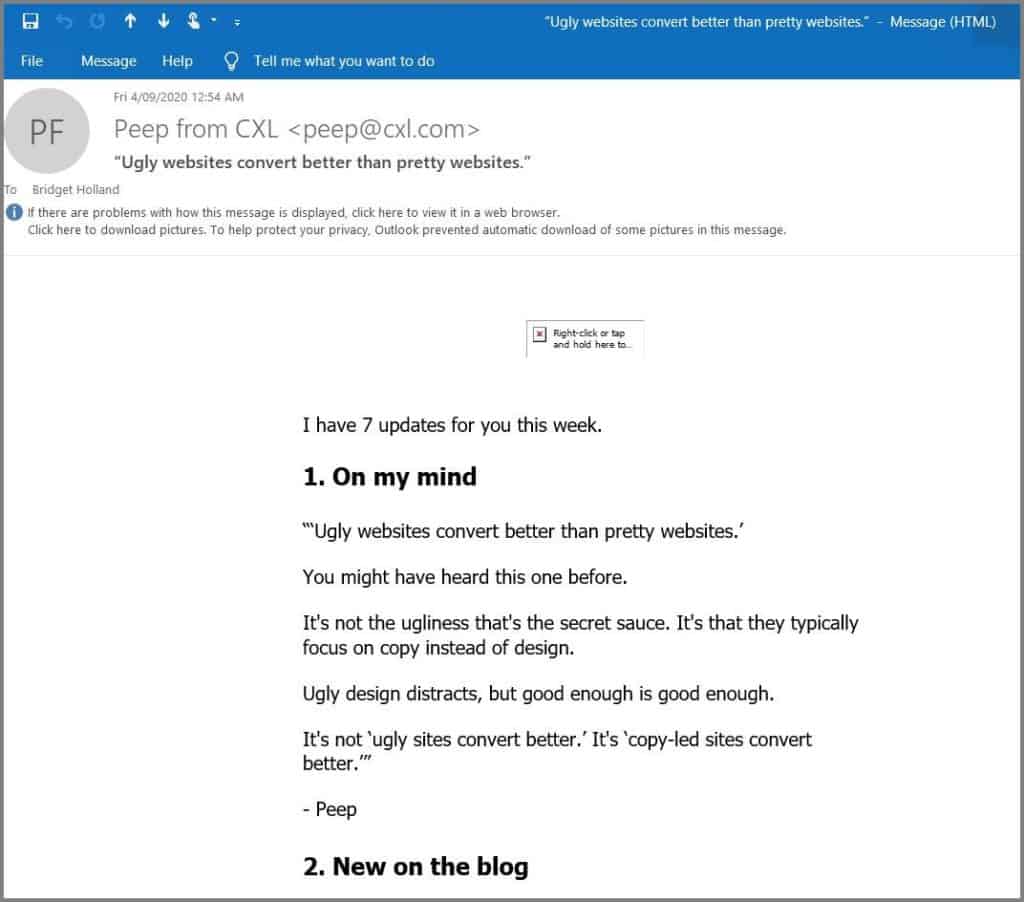
Measuring how effective your email newsletter is
So how do you tell whether people are interacting with your email?
The best kind of interaction is when someone responds.
So always make sure you send your newsletters from a real email address so that someone (you!) will see replies and can continue the conversation. It’s all about the relationship, and a reply is a chance to build that relationship.
Also, you won’t get replies unless you ask for them. Even then, you may not get replies.
I used to get a marketing email with a riddle at the end of it. Pure fun, nothing else, but I’d reply to the riddle, and Adam always responded. Over time, that built a relationship.
A click is a stronger interaction than an open
Clicks are a great measure of engagement. Someone wanted to see more. Opens are a little trickier.
Depending on email software and settings, an email may be marked as opened even when no human being has read it.
Even if all the opens are actual human interactions, that doesn’t mean they read the email closely. They may just have liked the subject line, then quickly lost interest. In truth, open rates measure the effectiveness of your subject line rather than your email.
For that reason, it’s a good idea to craft your email in a way that gives some immediate value, but also encourages people to click through. This gives you more ability to measure performance.
Here in Australia, we’re in the silly season, coming up to the long summer break.
Whether you’re planning for 2021 now or planning to review everything in the break, consider taking a step back and looking at how your email performs. See if there’s anything you can change to make it work better.

